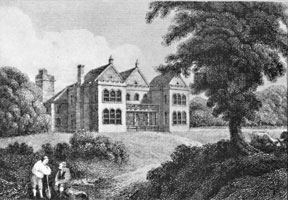![]()
The contents on this page remain on our website for informational purposes only.
Content on this page will not be reviewed or updated.
 |
|
 |
|
|
||||||
|
In Memory of Sir John Fortescue
|
||||||
|
||||||
|
Milton Keynes Citizen May 24, 2012
Desended from Richard Fortescue, Knight, 'Cupp-bearer to King William the Conqueror', Sir John Fortescue, (or 'Sir John Ffoscue', as he appears in writings of the time), purchased the interest of Salden, near Mursley in the later 16th century. He also owned the manor of Drayton Parslow, but repeatedly had to complain that the keepers and rangers of Lord Arthur Grey de Wilton, lord of the neighbouring manor of Whaddon, trespassed on his land in pursuit of deer. In fact his servants had to beat off the intruders with bows and staves and eventually the matter came before the Lords of the Privy Council. Here, Lord Grey contended that he had a right to fetch any deer of Whaddon Chase which strayed into Salden but the decision of the Lords was that Sir John had the right to 'absolute uninterrupted possession of his Manors.' Declaring that "there hath been a continual custom time out of mind for the keepers with hound and horn to hunt and "make in" the deer that had strayed from the Chase," Arthur got a little upset by this and a while later whilst in London he laid in wait for Sir John with a number of armed men. On seeing their quarry coming from Chancery Lane they then "strake him so sore" that he fell off his horse, and he might have been killed through further blows had a servant not pulled his 'insensible' body into an adjoining house. However, Sir John recovered and at the impressive mansion that he built at Salden would entertain Elizabeth I and James I, having enjoyed great favour during their successive reigns. In fact shortly after his succession it would be here that on June 28, 1603, King James knighted 22 worthies in one session. Built on the site of an old manor house, the mansion was constructed around a courtyard from locally made bricks at a cost of £33,000, with the principal width measuring 175 feet. One man was solely employed to open and close the numerous windows, and during his wanderings would no doubt greatly admire the many family coats of arms, richly depicted in stain glass. In the grounds of the mansion bowling greens for recreation were laid out although due to a wayward ball it was said that here one of the family members had been killed. At a local windmill corn was especially ground for the house, while for the impoverished of the district broken victuals were served daily in a nearby field appropriately known as Beggars Mead. Indeed, any poor people encountered by the Fortescues on their daily walks would be given 2s 6d. As for the opposite end of the social spectrum, when during her famous travels Celia Fiennes encountered the mansion she wrote '6 mile to Horwood, thence we pass by a lofty pile of building called Salden, a Gentleman's house.' Sir John Fortescue died at Westminster in 1607, and although this was the initial place of his burial his body was later moved to Mursley Church, where notable monuments to the family are to be seen in the chancel. As for Salden House, this was partly demolished in 1738 and when the remainder succumbed in 1743 the various building materials were sold for about £450 to Thomas Harris, a builder of Cublington. Only that part of the mansion used as a passage from the kitchen and great parlours escaped demolition, to be later converted into Salden House Farm (however, as a reminder of the former glory the ornate ironwork that graces the balcony of The George, in Winslow, was supposedly once a feature of Salden House). At the demolition of the mansion the noted antiquarian, Browne Willis, purchased a vestige of the stain glass 'for a trifle' (30s) and into the three lights of a north window this he inserted into St. Martin's Church, which he had founded at Fenny Stratford. There it may still be seen and especially interesting are the arms of Fortescue impaling 'Bolein,' dated 1556, since, possibly due to his relationship with Anne Boleyn, Sir John's father, Sir Adrian Fortescue, had fallen foul of Henry VIII, and, despite his distinguished career as a soldier, was consequently attainted for treason. |
||||||
|
|
||||||
|
|
||||||



